Key Takeaways
- DIR/Floortime is a child-led therapeutic approach developed by Dr. Stanley Greenspan and Serena Wieder in the 1980s.
- The model focuses on engaging with the child at their level, encouraging symbolic thinking, and nurturing relationships.
- It consists of developmental, individual differences, and relationship-based components tailored to a child’s developmental levels.
- The approach aims to boost cognitive growth and language skills and strengthen parent-child relationships through emotional connections.
- Initially developed for children with autism, it also benefits those with developmental challenges, sensory processing disorders, and language delays.
Understanding DIR/Floortime
Delving into developmental approaches, one stumble upon a state-of-the-art method known as DIR/Floortime. This method, developed in the 1980s by Dr. Stanley Greenspan and Serena Wieder, is a distinctive blend of strategies that prioritize developmental stages, individual variances, and relationship-based interactions in a child’s life. The DIR/Floortime approach is notably remarkable for its emphasis on engaging with the child at their level and encouraging child-led interactions.
It adopts critical principles such as following the child’s lead, challenging them within their Zone of Proximal Development, and employing scaffolding techniques to facilitate skill development. At the core of this approach lies heartfelt interactions, crucial in fostering a sense of trust and security in the child. This, in turn, aids in expanding communication circles and promoting symbolic thinking.
Core Components of DIR/Floortime

Having explored the general concept of DIR/Floortime, it becomes essential to dissect its core components and understand their significance in this innovative approach. The initial component, Developmental, pertains to the six developmental milestones children should typically achieve in the early years of life. It’s a vital part of the approach as it tailors interventions based on these developmental levels, effectively respecting and addressing the various stages of a child’s growth.
The following, Individual Differences, recognizes each child’s distinct biologically based ways of processing the world around them. This not only celebrates their strengths but also aids in creating a customized therapy plan. Lastly, the Relationship-Based component underscores the importance of warm, nurturing relationships with caregivers, which are essential for a child’s development. Floortime, the practical application of these principles, involves entering the child’s world and engaging in their emotional themes or interests, fostering their ability to relate, communicate, and think.
Principles of DIR/Floortime
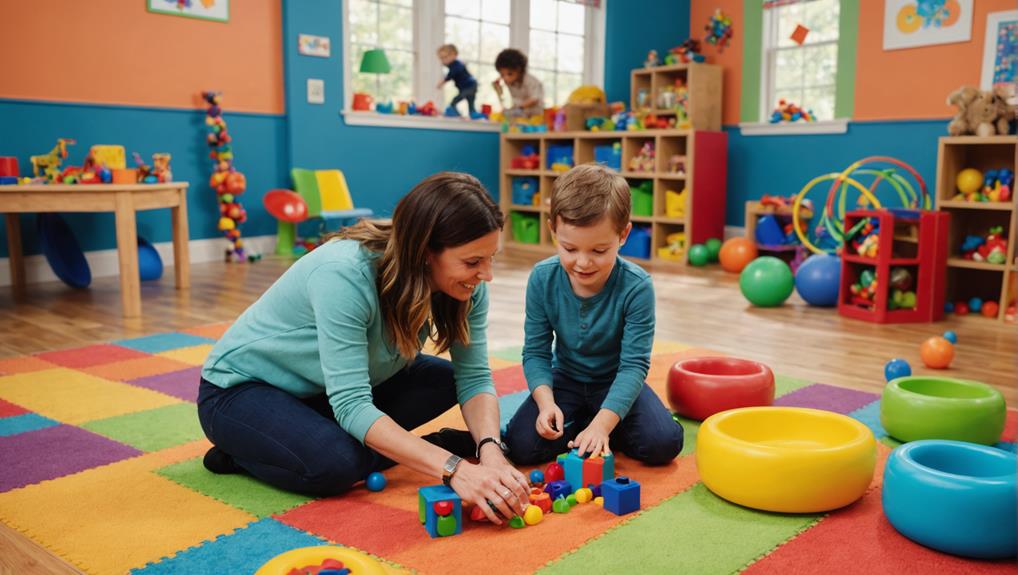
At the core of DIR/Floortime lie its guiding principles, which seek to foster children’s development by focusing on their unique needs and strengths. These principles emphasize a child’s interests, allowing them to lead interactions. This child-led approach promotes natural engagement and encourages communication skills. DIR/Floortime also acknowledges the importance of emotional connections, which nurture trust and a sense of security in the child. Strengthening Parent-Child Relationships is a crucial aspect of DIR/Floortime, enriching emotional bonds and flexibility.
Moreover, this therapy aims to boost language skills, symbolic thinking, joint attention, and problem-solving for cognitive growth. Another principle is the strategic use of challenge within the child’s Zone of Proximal Development, using scaffolding to foster skill advancement. To conclude, DIR/Floortime values the expansion of communication circles and developing symbolic thinking, solidifying its holistic approach to child development.
Benefits and Effectiveness of DIR/Floortime
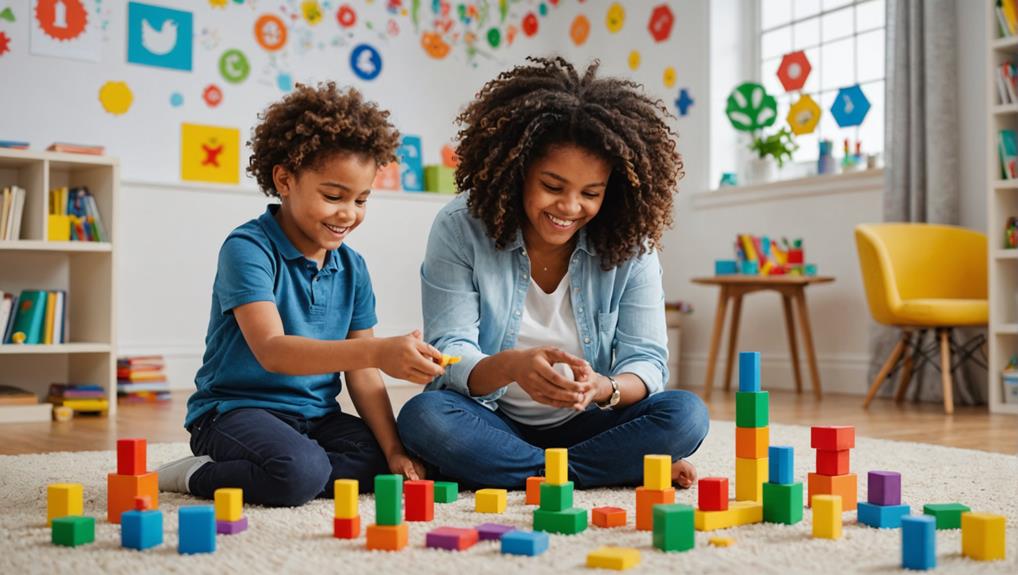
DIR/Floortime, as a therapeutic approach, offers multifaceted advantages, particularly for children with developmental challenges. It nurtures connections on a personal level, aids in language development, improves problem-solving abilities, enhances self-regulation skills, and fortifies social interactions.
Numerous studies have found favorable results, especially for children with sensory processing and communication difficulties. The approach can be customized to unique needs and is acknowledged for its efficacy by professionals in the field.
| Advantages | Efficacy |
|---|---|
| Strengthens personal connections | Customized to unique needs |
| Supports language development | Acknowledged by professionals |
| Enhances problem-solving skills | Positive results in studies |
| Improves self-regulation abilities | Helpful for sensory processing challenges |
| Fosters social interactions | Effective for communication difficulties |
DIR/Floortime is potent in supporting a child’s holistic development.
Who Can Benefit From DIR/Floortime

While the advantages of DIR/Floortime are substantial, understanding who can most effectively utilize this approach is essential. This therapy was developed by Stanley Greenspan, M.D., and Serena Wieder, PhD, in the 1980s, primarily for children with autism spectrum disorders. Greenspan and Wieder believed in the importance of child-led play, interaction, and the critical role of parents or caregivers for successful outcomes. Children with developmental challenges, including Autism Spectrum Disorder, Sensory Processing Disorders, Speech and Language Delays, and Attention Deficit Hyperactivity Disorder (ADHD), can significantly benefit from DIR/Floortime.
It’s not limited to these conditions, however. DIR/Floortime is a versatile approach that can aid any child who struggles with feelings and social and intellectual growth by promoting self-regulation, communication, and more intricate thinking. Therapists and educators can also use DIR/Floortime to improve developmental skills. Furthermore, parents can be involved in using this approach, becoming active facilitators in their child’s developmental voyage.
Incorporating DIR/Floortime at Home
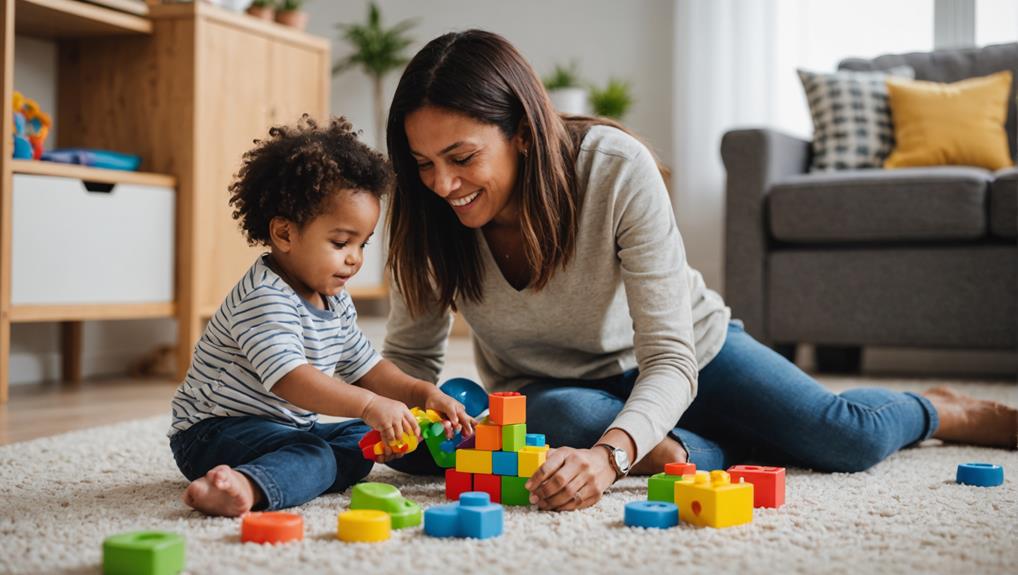
Although it may seem overwhelming, parents and caregivers can effectively incorporate DIR/Floortime principles into the home environment, fostering a supportive and engaging space for their child’s development. This therapy is especially beneficial in improving the child’s communication skills and strengthening social-emotional bonds. Begin by observing your child’s interests and engage in these activities at their level. Follow their lead, creating a safe and interactive space.
Play and imagination are vital elements, so encourage your child to express themselves creatively. Use positive reinforcement to foster skill development. Remember, the goal is to improve communication, emotional connections, and problem-solving skills. Each child is unique, so tailor these principles to your needs. Importantly, patience and consistency are crucial. While the process may seem challenging initially, the long-term benefits for your child are significant.
Comparison Between DIR/Floortime and the ABA Approach
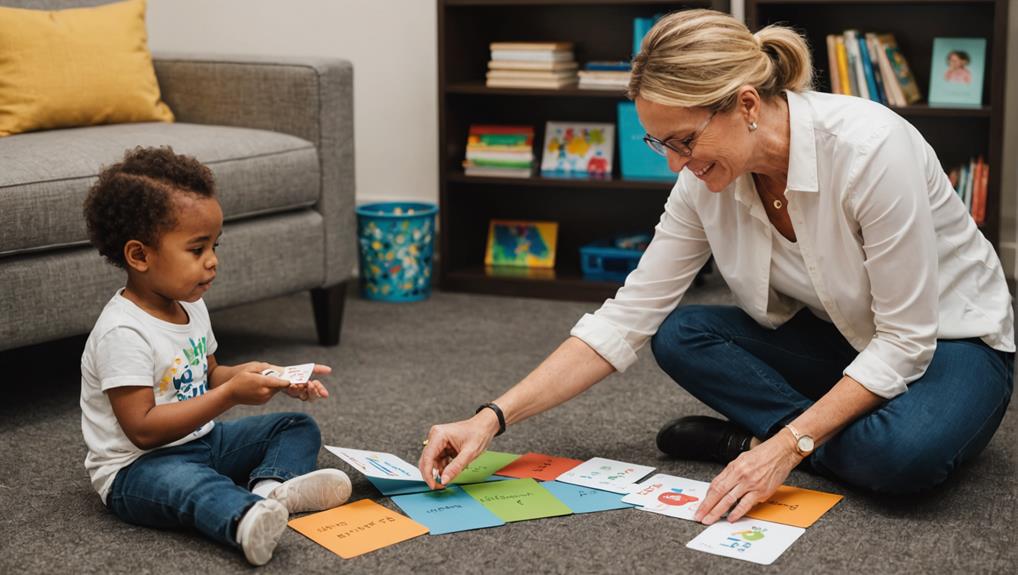
Exploring the landscape of therapeutic approaches for children with developmental challenges can often feel like navigating an intricate maze. DIR/Floortime and Applied Behavioral Analysis (ABA) are commonly used methods. While both aim to improve developmental skills, they differ notably. ABA focuses on behavioral changes through reinforcement strategies, providing structure and predictability.
In contrast, DIR/Floortime emphasizes emotional connections, developmental stages, and individual differences with a less rigid, more flexible approach. It encourages child-led interactions, fostering creativity and spontaneity. ABA and DIR/Floortime can be considered two ends of a spectrum, each offering distinct advantages depending on the child’s needs, strengths, and challenges. Understanding these differences helps therapists and parents tailor interventions for each child’s developmental path.
Making the Choice: DIR/Floortime or ABA
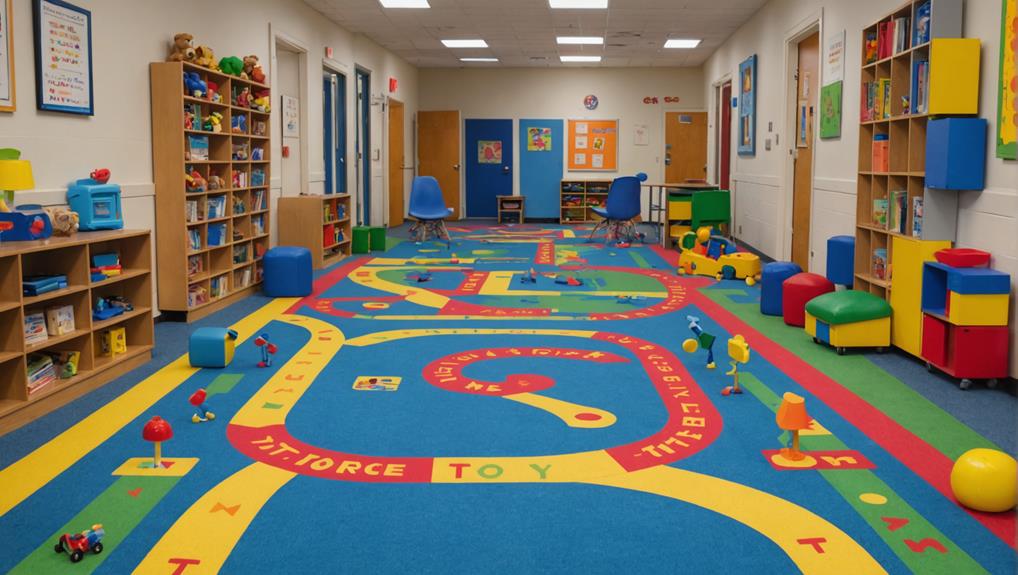
Choosing between DIR/Floortime and ABA for your child’s therapeutic intervention can seem challenging, given each approach’s distinct philosophies, methods, and goals. Each child is exceptional, and what works for one might not work for another. When making this decision, it’s crucial to contemplate your child’s specific needs and learning style. DIR/Floortime may be more suitable for children who benefit from a play-based, child-led approach, focusing on heartfelt connections and developmental growth.
On the other hand, ABA might be more effective for children who respond well to structured, goal-oriented strategies. It’s advisable to consult with professionals in the field who can guide your decision based on their expertise and experience with these approaches.
Integrated Approach: DIR/Floortime and ABA
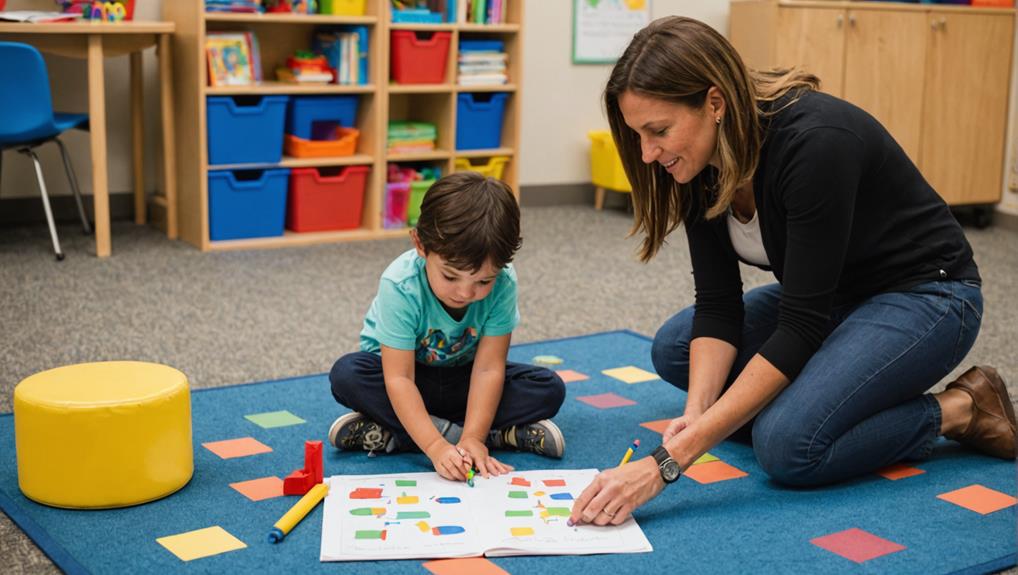
Many parents and experts have discovered the advantages of combining the DIR/Floortime and ABA approaches in their therapeutic intervention plans. This integrated method amplifies the benefits of both techniques, forming a more thorough and efficient treatment plan. ABA’s structured teaching techniques and behavior modification approaches can be valuable in instructing new skills and reducing problematic behaviors.
At the same time, DIR/Floortime’s focus on emotional connections and child-led interactions can enrich social and emotional development. The synergistic blend of these methods creates a tailored and dynamic treatment strategy. Cooperation among professionals, parents, and the child is essential to optimize benefits. This integrated method, customized to the child’s needs, can significantly improve developmental outcomes.
TherapyWorks Services and DIR/Floortime
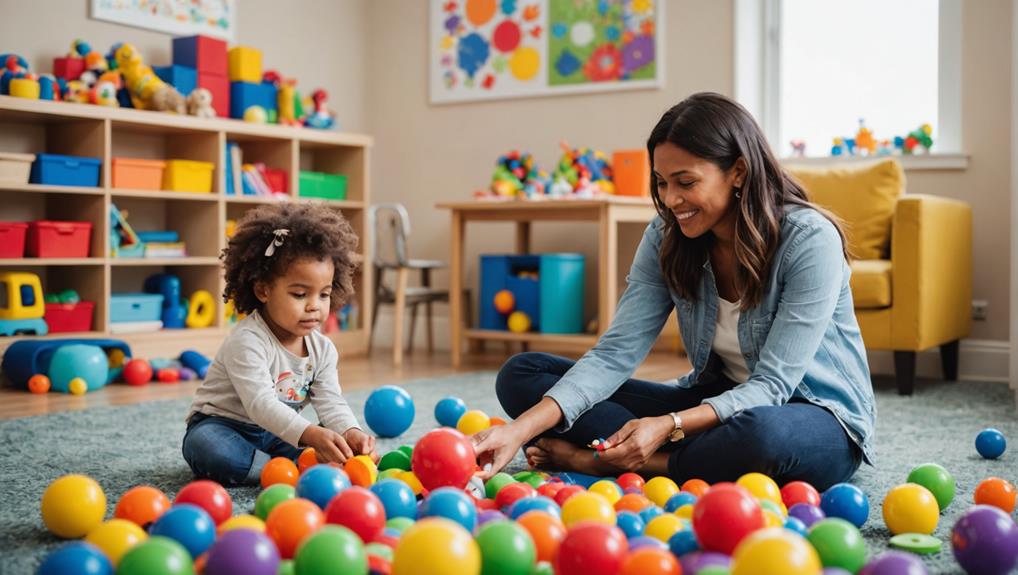
Building on the integrated approach of DIR/Floortime and ABA, TherapyWorks provides a range of services that utilize the principles of both these methodologies. This effective combination addresses the specific needs of children with developmental challenges and fosters their growth.
- TherapyWorks offers tailored services like Speech, Physical, or Occupational Therapy. Each service is customized to incorporate DIR/Floortime principles to improve children’s communication, emotional functioning, and sensory processing.
- ABA techniques are used in conjunction with children to enhance their developmental skills.
- The therapists at TherapyWorks adopt a multidisciplinary approach, ensuring a coordinated treatment plan.
- The focus is not just on the child but also includes empowering parents with strategies to implement DIR/Floortime at home.
- TherapyWorks demonstrates a solid commitment to ensuring each child’s holistic development, reflecting their understanding of individual differences and the importance of relationships in their growth.
Frequently Asked Questions
What is the guide to DIR/Floortime?
The guide to DIR/Floortime emphasizes a developmental, relationship-based approach that nurtures emotional connections and supports a child’s unique learning style. As a certified therapist, I can help you understand how to implement these principles to foster your child’s growth and emotional well-being.
How Is DIR/Floortime Different From Standard Play Therapy Methods?
DIR/Floortime differs from standard play therapy, specifically targeting children’s developmental levels and personal differences. It encourages child-led interactions and skill development through scaffolding and focuses on psychological interactions to foster trust and communication skills.
What Specific Training Do Therapists Need to Implement Dir/Floortime Effectively?
To implement DIR/Floortime effectively, therapists need expert training in understanding child development, sensory processing, unique differences, and relationship-building strategies. This training typically involves coursework, supervised practice, and ongoing professional development.
Can DIR/Floortime Be Used in Conjunction With Other Therapies Such as Speech, Music, or Art Therapy?
DIR/Floortime can be effectively integrated with other therapies, such as speech, music, or art therapy. In a therapeutic context, these creative modalities can enrich child-led interactions, promotion, and promotional, social, and cognitive development.
How Can Progress and Success Be Measured in Dir/Floortime?
Progress and success in DIR/Floortime can be measured through observable improvements in a child’s social, cognitive, and intellectual capacities, including improved communication, better self-regulation, increased problem-solving skills, and more meaningful relationships. Regular evaluations track these developmental milestones.
What Challenges Might Parents Face When Implementing DIR/Floortime at Home?
Parents implementing DIR/Floortime at home might face challenges such as accurately interpreting their children’s cues, managing time for consistent engagement, balancing child-led play, and introducing new developmentally appropriate challenges for their children’s growth.
Conclusion
To sum up, DIR/Floortime offers a robust, child-led therapeutic approach that nurtures emotional and cognitive growth through engaging play-based interactions. Its flexibility allows for personalized treatments tailored to each child’s needs, fostering a supportive environment for learning and development. By incorporating DIR/Floortime with other therapies, children can receive comprehensive support that enhances their overall growth and strengthens their relationships with parents and caregivers.
If you are interested in this approach, find a therapist who uses the DIR/Floortime method and talk to them about your needs. Together, you can create a plan that best supports your child’s journey!

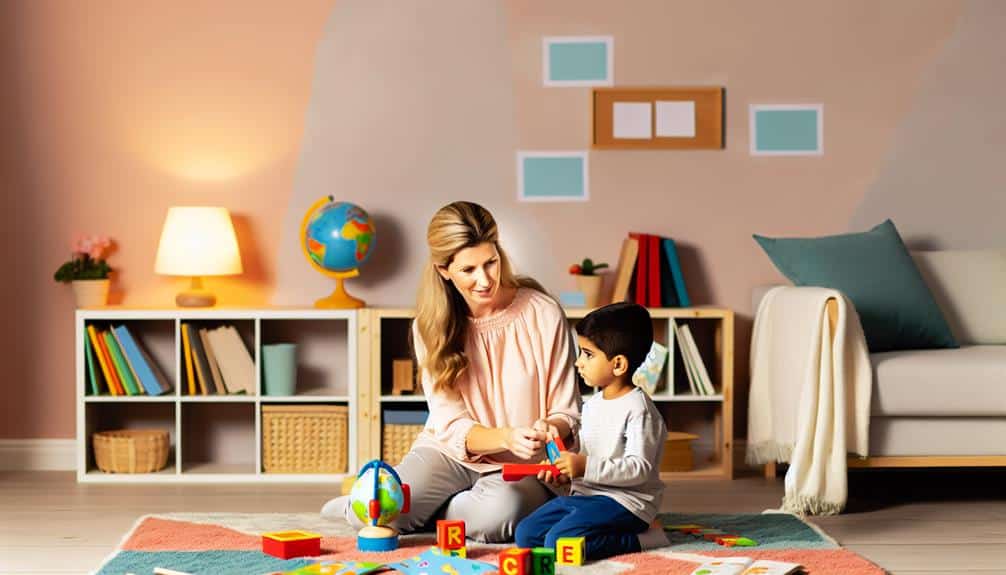
Recent Comments